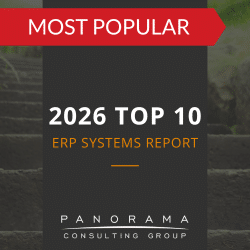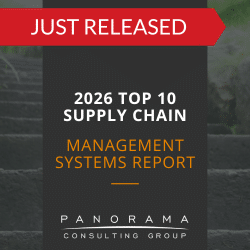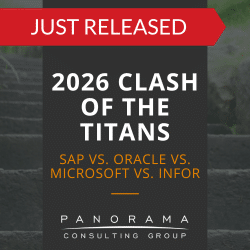Earlier this week, jewelry retailer Shane Company filed for bankruptcy and partially blamed its botched SAP implementation for its woes. While other factors such as a weak economy and a brutal retail environment undoubtedly contributed to the company’s difficulties, it is clear that its ERP project did not help matters.
Unfortunately, Shane Co. is not alone in its troubled ERP implementations. As Panorama Consulting commonly sees in the industry, ERP software is a double edged sword: on one hand, it offers tremendous opportunity to improve and transform a business, but on the other it can be risky if the implementation is not managed appropriately.
So what lessons can we take from this and other ERP failures? While we were not associated with the Shane Co. ERP debacle, we observed a number of failure points based on what we know of the project:
- Failure to manage scope and cost. There is no reason for a $200M company to spend $36M and 3 years to implement an ERP solution, as Shane Co. did. According to our study of 1,300 ERP implementations across the globe, the average company spends 9% of annual revenue on their ERP implementations. The average Panorama client spends less than 5% of their annual revenue on their ERP investments. By contrast, Shane Company spent 18% of its annual revenue on its SAP project, and the solution still didn’t work. This is clear evidence of a failure to manage the project scope and cost.
- Undefined and/or untested business requirements and workflows. Given the fact that the company spent as much as it did on SAP and still had inventory management issues, it is likely that the company’s business requirements were not well-defined. If the company had clearly defined its requirements and thoroughly tested the system to those requirements prior to go-live, it would have been more likely to have more efficient and effective processes that would have helped avoid the problem of “overstocks and the wrong mix of inventory.”
- A budget and implementation plan that was not grounded in reality. In Shane’s case, they were sold on a one-year implementation and $10M cost. The actual cost and duration was 300% of what the company expected. Any company considering a new ERP system should understand that the goal of many software sales reps is to understate the cost and duration to close the deal. An independent ERP evaluation will often alleviate such mismanagement of expectations.
- Poor ERP software selection. Although we can’t be certain, it is likely that SAP may not have been the appropriate choice for Shane Co. Small and mid-sized businesses such as Shane have dozens of viable software options to choose from, so they should take the time to evaluate and select the right ERP system. If SAP was indeed the right fit for Shane Co., I have trouble believing that it would have cost nearly as much as it did.
There are probably other contributing factors to Shane Company’s ERP failure, but these are some hypothesized lessons learned from the company’s painful experience.












